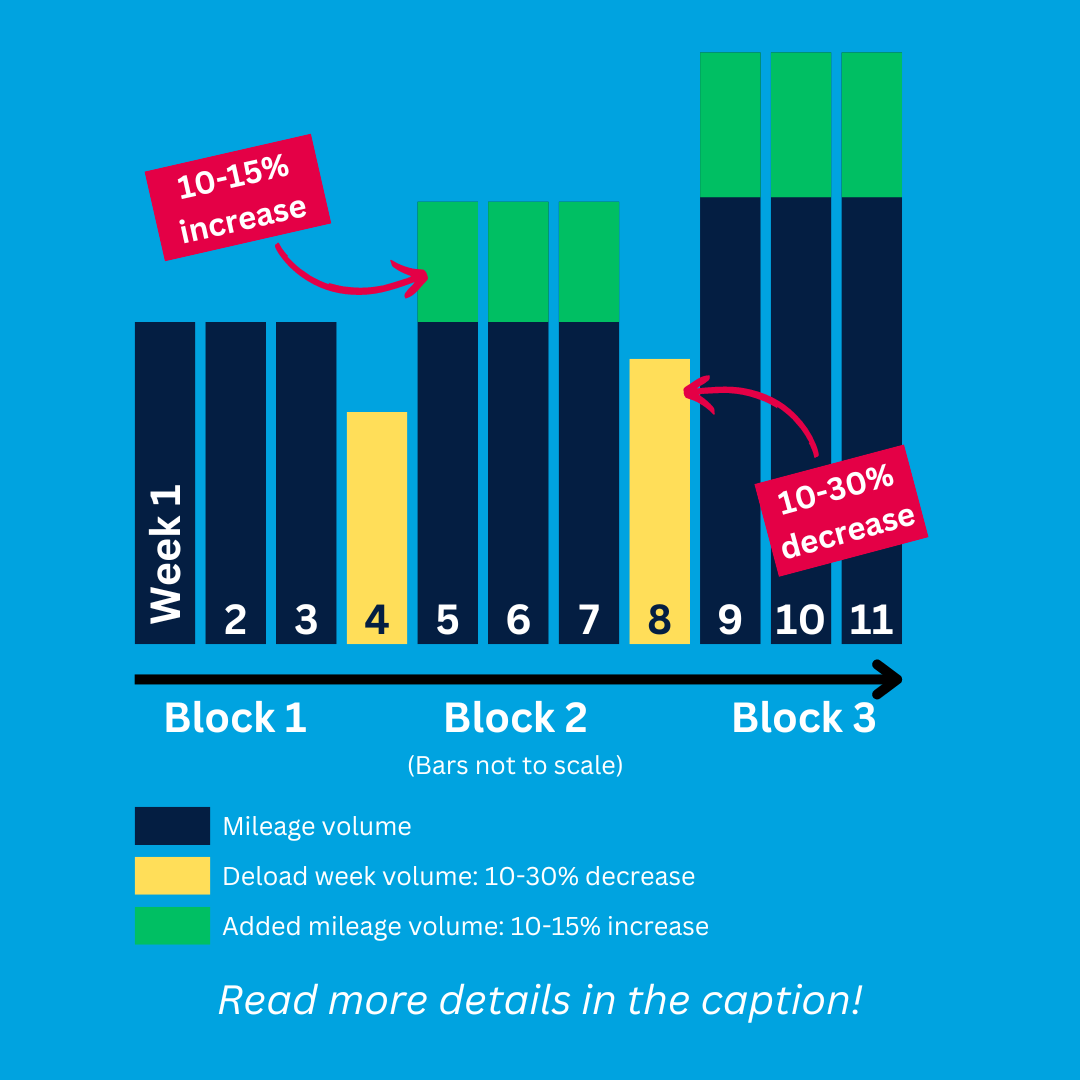Progressing your Training Volume the Right Way

One of the most important aspects of training is time on feet.
More time spent running and increasing your weekly mileage will ultimately make you a better long-distance runner.
Having a large volume of training makes your body adapt for improved long-distance performance:
- Increased capillary density in your muscles
- Increased mitochondrial density in your body for more energy production
- Improved mood and mental health
So what’s the best way to progress your running mileage that won’t re-aggravate your knee or other past injuries?
I’ve seen many runners get way too aggressive with their mileage progression.
You may see training plans online look like this regarding weekly mileage:
- Week 1 - 10 miles
- Week 2 - 15 miles
- Week 3 - 20 miles
- Week 4 - 25 miles
Forget increasing mileage every week to week. That’s a recipe for overtraining and injury!
I suggest taking a blocked training approach.
The blocked training approach works like this:

🏃 Keep the mileage constant for a 3-4 week “block”. The individual workouts could vary, but the mileage week to week in the block is the same.
📉 Take a “deload week” after your block. This allows your body to recover and grow the necessary adaptations to take on your next block. The decrease is about 10-30% of previous weekly mileage.
📈 Now you’re ready to increase your mileage in your next block. Remember the weekly mileage stays constant for 3-4 weeks. But the total weekly mileage is now 10-15% higher than the previous block’s weekly mileage.
When we consider a 4-week block (3 training weeks + 1 deload week), a training plan could take up to 20 weeks, or 4 blocks of training.
This approach can help overtraining and also alleviate the stress of changing volume week to week mentally and physically.
This method also respects the fact that positive adaptations to the body take time. Rushing the entire process places you at risk of injury.
Consider making this change to your next training plan, and feel your race performance improve.
Thanks for reading. See you all next week!




